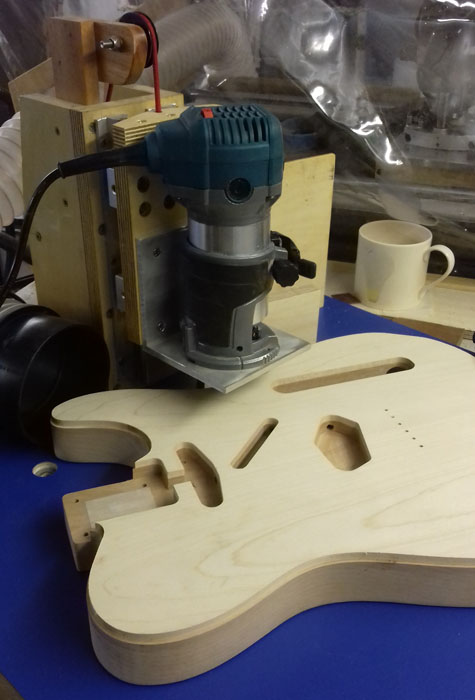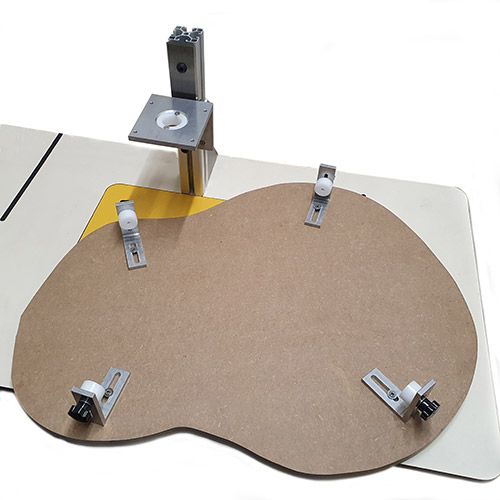I understand John's problem as I build ukes and guitars.
Because the back is domed, either:
1. the binding channel is cut at an angle (if the router base is held flat to the back), making the channel too deep and with a slanted base, or
2. if the router is held vertical, the binding channel is too shallow where there is doming because the router base is sitting too high.
I don't have a solution where the router does it all, though I have seen complex jigs with swinging arms which claim to achieve a channel of uniform depth with a flat base.
My plan is to make a simple gramil - a scrap of wood with a rebate of maybe 6mm, and a blade stuck through it at my binding depth. I'll run this around the body of the instrument before binding, and as it will only just overlap the back or front of the instrument the dome shouldn't affect it. This will give me a scribed line of uniform depth.
Then I'll rout holding the router vertically. In places it won't cut down to the line, and so there I'll finish the channel by hand using a chisel.
A far from perfect solution, but it should work!



































